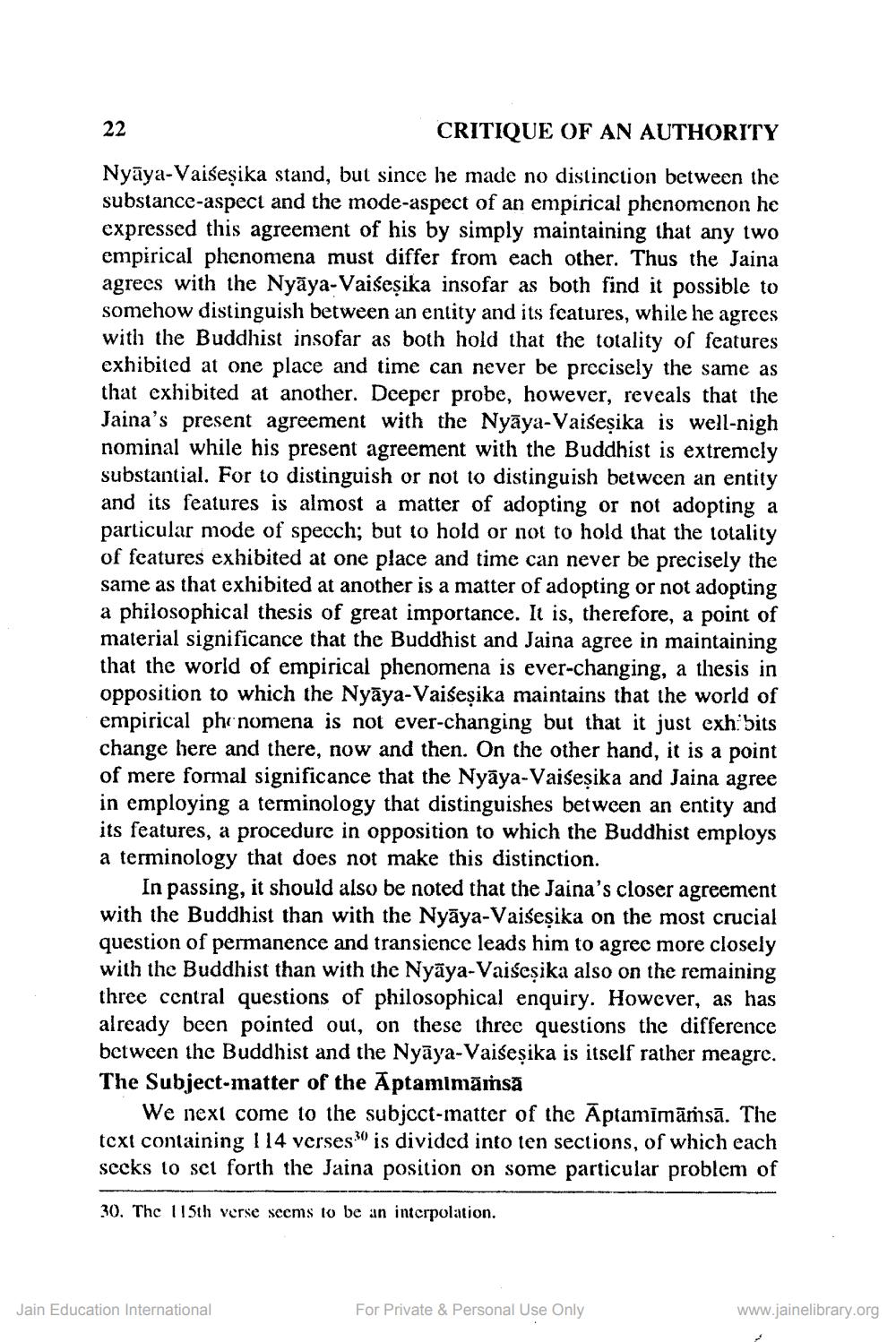________________
22
CRITIQUE OF AN AUTHORITY
Nyāya-Vaisesika stand, but since he made no distinction between the substance-aspect and the mode-aspect of an empirical phenomenon he expressed this agreement of his by simply maintaining that any two empirical phenomena must differ from each other. Thus the Jaina agrees with the Nyāya-Vaiseșika insofar as both find it possible to somehow distinguish between an entity and its features, while he agrees with the Buddhist insofar as both hold that the totality of features exhibited at one place and time can never be precisely the same as that exhibited at another. Deeper probe, however, reveals that the Jaina's present agreement with the Nyāya-Vaiseșika is well-nigh nominal while his present agreement with the Buddhist is extremely substantial. For to distinguish or not to distinguish between an entity and its features is almost a matter of adopting or not adopting a particular mode of specch; but to hold or not to hold that the totality of features exhibited at one place and time can never be precisely the same as that exhibited at another is a matter of adopting or not adopting a philosophical thesis of great importance. It is, therefore, a point of material significance that the Buddhist and Jaina agree in maintaining that the world of empirical phenomena is ever-changing, a thesis in opposition to which the Nyāya-Vaiseșika maintains that the world of empirical phenomena is not ever-changing but that it just exh: bits change here and there, now and then. On the other hand, it is a point of mere formal significance that the Nyāya-Vaiseșika and Jaina agree in employing a terminology that distinguishes between an entity and its features, a procedure in opposition to which the Buddhist employs a terminology that does not make this distinction.
In passing, it should also be noted that the Jaina's closer agreement with the Buddhist than with the Nyāya-Vaišesika on the most crucial question of permanence and transience leads him to agree more closely with the Buddhist than with the Nyāya-Vaisesika also on the remaining three central questions of philosophical enquiry. However, as has already been pointed out, on these three questions the difference between the Buddhist and the Nyāya-Vaiśesika is itself rather meagre. The Subject-matter of the Aptamimāṁsā
We next come to the subjcct-matter of the Aptamīmāṁsā. The text containing 114 verses is divided into ten sections, of which each secks to set forth the Jaina position on some particular problem of
30. The
15th verse seems to be an interpolation.
Jain Education International
For Private & Personal Use Only
www.jainelibrary.org




